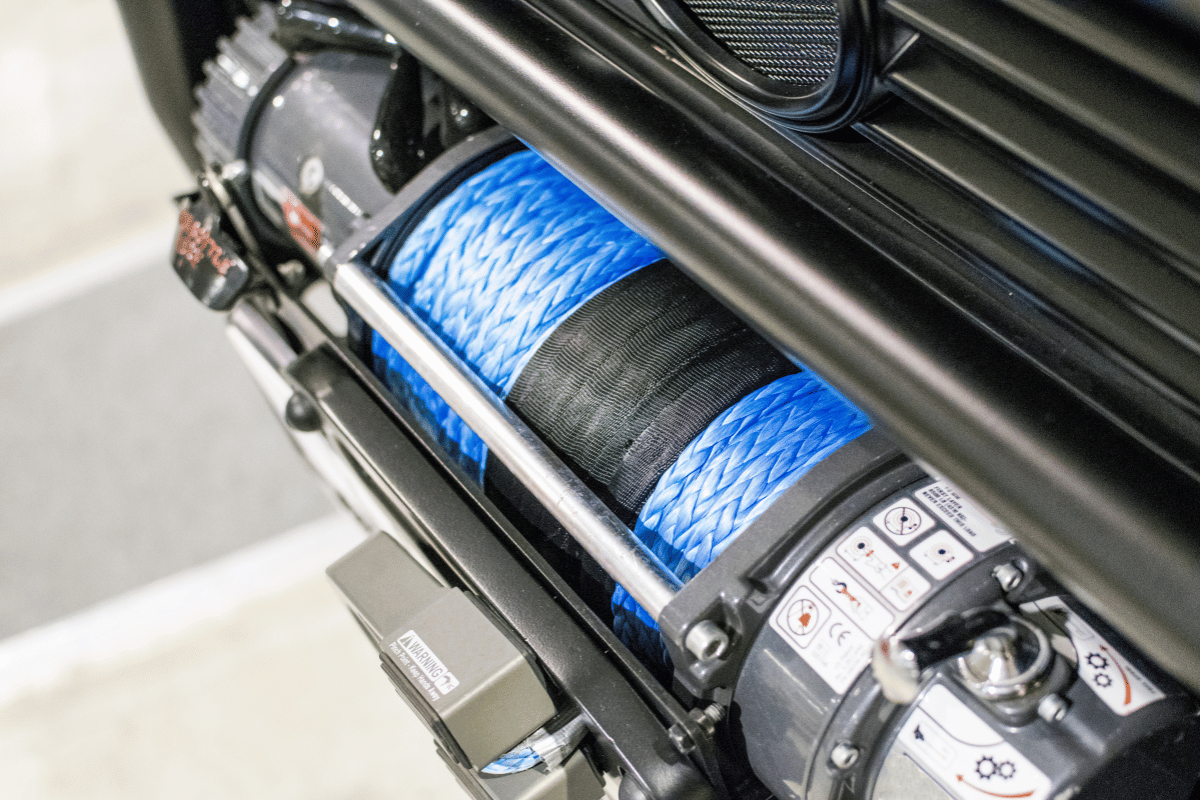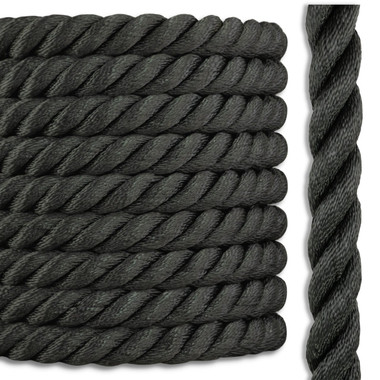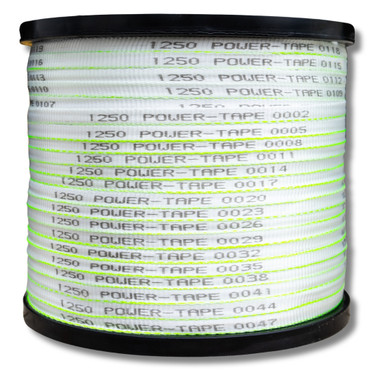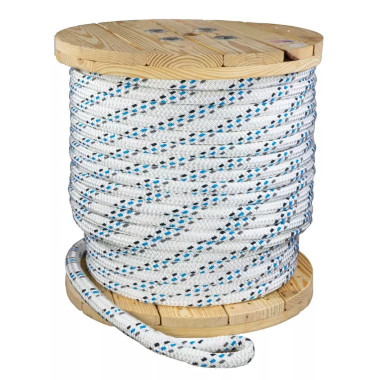The Best Ropes for Towing Off-Road Vehicles and Key Safety Tips
Estimated 0 min read
When your ATV is buried in mud, your off-road truck is stuck in a ditch, or you're helping a buddy out of a jam, having the right towing rope can make the difference between an easy recovery and a long, frustrating day. But with so many options on the market—and some companies charging sky-high prices for “special towing ropes”—it’s hard to know what you actually need.
Here’s the good news: You don’t need a bank-breaking specialized rope to get the job done. A quality towing rope from the right material, with proper safety measures, can handle most jobs at a fraction of the cost. In this blog, we’ll break down the best ropes for towing off-road vehicles, how to choose the right one, and the safety tips every DIYer should know.
Choosing the Right Towing Rope
Towing isn’t one-size-fits-all. The best rope for towing depends on the type of vehicle you’re pulling, the pulling capacity of the rescue vehicle, and the conditions you’re working in. You’ll want to select a towing rope based on the pulling capacity of the vehicle that is towing, since that determines how much force will be exerted on the rope. It’s recommended that your tow rope have a breaking strength of at least 3x the weight of the towing vehicle. Finally, we recommend ordering a custom length of 20’ or 30’, and adding an eye splice with a chafe guard to each end (or a galvanized thimble splice if you have the right hitch). Let’s take a look at three common rope types and their pros and cons for towing.
1. Double Braid Nylon Rope: The Stretch Champion
Double braid nylon rope is a towing favorite for good reason. It offers excellent strength with a bit of stretch, which is key for jobs that require a running start. That stretch absorbs shock loads and builds momentum, helping you pull stuck vehicles out of tricky spots without damaging the rope or your equipment. Double braid is fairly lightweight for its strength, making it easy to work with.
Double braid nylon specs:
| Diameter | | Breaking Strength (Lbs) | | Safe Working Load Limit (SWLL) (Lbs) | |
| 1/2" | 7,800 | 650 - 1,560 |
| 3/4" | 17,350 | 1,445 - 3,470 |
| 1" | 30,250 | 2,520 - 6,050 |
This rope is strong, durable, and has a smooth surface that resists snagging. It’s perfect for towing with ATVs, small trucks, and other off-road vehicles. The downside? It’s a little more expensive than twisted nylon, but still much cheaper than overpriced "specialized" ropes that are often just nylon ropes with a fancy label.
2. Twisted Nylon Rope: Budget-Friendly with Stretch
If you’re looking for a solid truck tow rope or a rope tow for sale without breaking the bank, twisted nylon rope is a great option. It has a bit less stretch than double braid nylon but still provides enough give for towing applications. As you can see, the SWLL of a 2” Twisted Nylon is up to 18,400 lbs—considerably stronger than the largest diameter Double Braid.
Twisted nylon specs:
| Diameter | | Breaking Strength (Lbs) | | Safe Working Load Limit (SWLL) (Lbs) | |
| 1" | 22,600 | 1,883 - 4,520 |
| 1-1/2" | 53,000 | 4,416 - 10,600 |
| 2" | 92,000 | 7,666 - 18,400 |
It’s slightly less strong for its size compared to double braid nylon, but it’s also more affordable. If you’re towing with a heavier vehicle or just want a reliable backup rope, twisted nylon is a practical choice.

3. UHMPE Rope: Maximum Strength, Minimal Stretch
For heavy-duty jobs or when precision is key (like winching), UHMPE rope is a top performer. This ultra-high molecular weight polyethylene rope is stronger than steel wire of the same size but lightweight and easy to handle. Our 2” UHMPE rope has a breaking strength of 376,000 lbs, meaning you could tow a fully loaded semi-truck if need be, although we don’t recommend trying that.
UHMPE specs:
| Diameter | | Breaking Strength (Lbs) | | Safe Working Load Limit (SWLL) (Lbs) | |
| 1/2" | 33,000 | 2,750 - 6,600 |
| 3/4" | 70,000 | 5,833 - 14,000 |
| 1" | 116,000 | 9,665 - 23,200 |
However, UHMPE has virtually no stretch, which can be both an advantage and a drawback. It’s ideal for controlled pulls but isn’t suited for running starts since it can’t absorb shock loads. If you’re using a winch, UHMPE is your best bet.
What About Tow Straps?
One thing that tow straps lack is stretch. When attempting to rescue a vehicle from mud or a ditch, a rope with stretch can allow you to get momentum and traction before the full weight of the towed vehicle resists the movement. Towing straps are fine for towing, but for vehicle recovery you are better off with a vehicle recovery rope such as twisted nylon or double braid nylon.
Safety Measures for Towing
Towing may seem straightforward, but without proper precautions, it can be dangerous. Follow these tips to ensure a safe and successful recovery.
1. Match the Rope to the Pulling Capacity of the Rescue Vehicle
One common mistake is choosing a rope based on the weight of the stuck vehicle. Instead, you should match the towing rope to the pulling capacity of the rescue vehicle. No matter the weight or resistance of the stuck vehicle, the power and weight of the towing vehicle are what determines force exerted on the rope. Take the weight of your rescue vehicle and multiply it by 3. This is the minimum Breaking Strength of the rope you’ll want to select. This ensures the rope can handle jerking, slipping, and the force required to free the stuck vehicle without snapping. When in doubt, a stronger rope won’t hurt.
2. Use the Right Length of Rope
A rope that’s too short increases the risk of accidents, while one that’s too long reduces control. Most towing jobs require a rope length between 20 and 30 feet.
3. Inspect Your Rope Before Each Use
Check for fraying, cuts, or other damage before towing. Even a small weakness in the rope can lead to failure under load.
4. Avoid Sudden Jerks (esp. with Non-Stretch Ropes)
If you’re using a non-stretch rope like UHMPE, avoid sudden jerks. These ropes aren’t designed to absorb shock loads and could fail if used improperly. For running starts, stick with double braid nylon or twisted nylon rope. Even on your run up, do not exceed 5 mph when towing—slow and steady wins the day.
5. Attach the Rope Properly
Use proper towing points on both vehicles. Never attach the rope to a bumper, hitch ball, or any non-reinforced part of the vehicle, as these can easily break under load.
6. Clear the Area
Keep bystanders at a safe distance in case the rope or towing hardware fails. The snapback from a broken rope can cause serious injuries.

Why Overpay? Get Quality Towing Rope Without the Markup
Many companies charge a premium for basic ropes by slapping on a fancy name and packaging. Don’t fall for the hype. At RightRope.com, you can find double braid nylon, twisted nylon, and UHMPE ropes for towing at fair prices, without sacrificing quality.
For example, companies often sell double braid nylon ropes with spliced eyes and chafe guards for double or triple the cost of the same rope at RightRope. Instead of overspending, you can get the same durable rope at a fraction of the price and still have enough left over for other gear.
Final Thoughts
When it comes to towing off-road vehicles, you don’t need to spend a fortune to get the job done. By choosing the right rope—whether it’s double braid nylon, twisted nylon, or UHMPE—and following proper safety measures, you can handle almost any towing situation.
So next time you’re stuck in the mud or helping a friend out of a jam, remember: the right towing rope paired with a little know-how will make all the difference.
Browse our selection of truck tow ropes and rope tows for sale today and get equipped for your next adventure.








